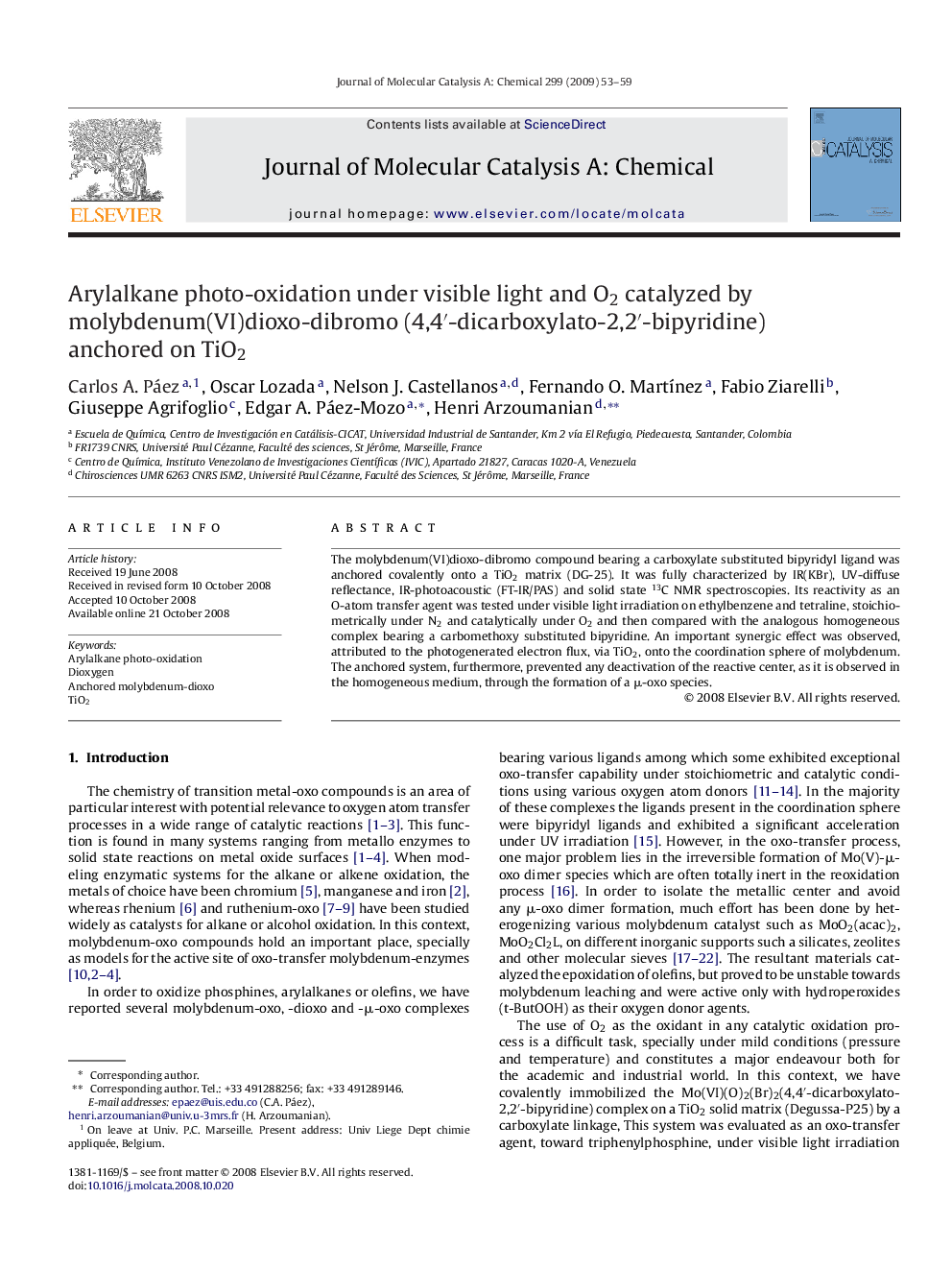| Article ID | Journal | Published Year | Pages | File Type |
|---|---|---|---|---|
| 67190 | Journal of Molecular Catalysis A: Chemical | 2009 | 7 Pages |
The molybdenum(VI)dioxo-dibromo compound bearing a carboxylate substituted bipyridyl ligand was anchored covalently onto a TiO2 matrix (DG-25). It was fully characterized by IR(KBr), UV-diffuse reflectance, IR-photoacoustic (FT-IR/PAS) and solid state 13C NMR spectroscopies. Its reactivity as an O-atom transfer agent was tested under visible light irradiation on ethylbenzene and tetraline, stoichiometrically under N2 and catalytically under O2 and then compared with the analogous homogeneous complex bearing a carbomethoxy substituted bipyridine. An important synergic effect was observed, attributed to the photogenerated electron flux, via TiO2, onto the coordination sphere of molybdenum. The anchored system, furthermore, prevented any deactivation of the reactive center, as it is observed in the homogeneous medium, through the formation of a μ-oxo species.
Graphical abstractThe anchoring of the molybdenum-dioxo complex on the TiO2 matrix increased significantly the O-transfer capability, via the photogenerated flux onto the molybdenum coordination sphere, and furthermore isolated the metallic centers and avoided any undesired deactivation by μ-oxo dimer formation, lengthening, thus, significantly the lifetime of the catalyst.Figure optionsDownload full-size imageDownload as PowerPoint slide
